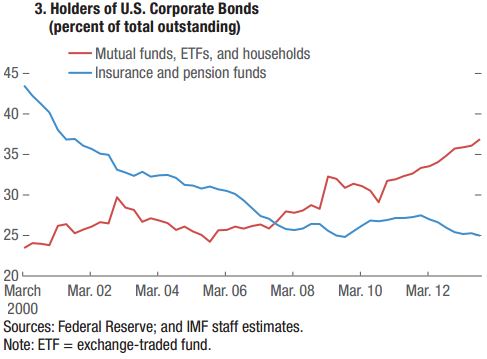Regulators impose new limits on leveraged ETFs
Post on: 15 Апрель, 2015 No Comment

BOSTON (AP) — Regulators are imposing new restrictions on leveraged exchange-traded funds, volatile investments that can multiply the gains or losses of a market index or benchmark.
Traditional ETFs track a market index such as the Standard & Poor’s 500, and can be traded throughout the day, unlike mutual funds. Leveraged ETFs seek to deliver multiples of an index or benchmark, often in volatile.
Content Preview This content is exclusive for Newsday digital access and home delivery subscribers and Optimum Online customers.
Already registered?
Get Newsday digital access
BOSTON — BOSTON (AP) — Regulators are imposing new restrictions on leveraged exchange-traded funds, volatile investments that can multiply the gains or losses of a market index or benchmark.
Traditional ETFs track a market index such as the Standard & Poor’s 500, and can be traded throughout the day, unlike mutual funds. Leveraged ETFs seek to deliver multiples of an index or benchmark, often in volatile areas such as commodities or currencies that involve derivatives like futures contracts and swaps.
The Financial Industry Regulatory Authority issued a notice Monday that it will increase customer margin requirements in leveraged ETFs beginning Dec. 1. The requirements boost the amount an investor must deposit with a broker before they can borrow to invest on margin in the products.
FINRA, an independent industry regulator, and government regulators at the Securities and Exchange Commission have recently issued warnings highlighting risks for investors in leveraged ETFs, particularly those investing for the long-term. And some brokerage firms have set new sales limits on customer investments in leveraged ETFs, with some halting sales outright.
The issue has only drawn broad attention since June, when Washington-based FINRA asked brokers and financial advisers to tell clients about the risks, as well as the potential that actual returns may vary widely from stated performance objectives.
FINRA spokesman Herb Perone said Tuesday that leveraged ETFs are very complicated, with a high element of risk. They are very much on FINRA’s radar screen.
The new rule does not apply to investors who buy ETFs using cash paid up front, but instead to those who borrow from a brokerage on margin to invest. Such investing involves two levels of risk: first, from the borrowing to make the initial investment, and second through the investment itself, which can lead to outsized gains or losses. The investments’ inherent volatility has been magnified in the markets’ frequent ups and down of the past year.
The new rule will require customers buying leveraged ETFs on margin to make greater downpayments than they previously needed to make a purchase. The required amount depends on the strategy the leveraged ETF employs — for example, an investor buying a leveraged ETF designed to yield 300 percent of an underlying index’s returns must put up more cash than one buying into an ETF offering only double the returns.
The rules also apply to inverse or short ETFs that seek to bet against the index or benchmark they track, as a hedge against market downturns. In addition, the requirements apply to uncovered options on leveraged ETFs. Options are a form of insurance to protect investors against fluctuating market prices.
A FINRA public warning last month about leveraged ETFs gave the following example: Over a five-month period that ended April 30, a leveraged ETF seeking to deliver three times the daily return of the Russell 1000 Financial Services Index fell 53 percent, while the underlying index actually gained about 8 percent. A leveraged short ETF seeking to deliver three times the inverse of the Russell 1000 Financial Services Index’s daily return declined by 90 percent over the same period.
Please log in to comment. Civility matters; click here to read our commenting guidelines. Log in














